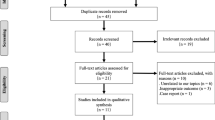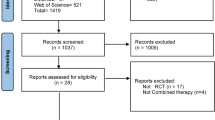Abstract
Stroke is the fifth leading cause of death and disability in the United States with approximately 6.8 million people living with residual deficits and approximately $34 billion spent on treatment annually [1, 2]. Simultaneously, dramatic healthcare shifts have limited extended care accessibility, with many individuals discharged from restorative therapy by three-months post-stroke. Decreased access and increased costs have led clinicians, and scientists to investigate more effective and efficient interventions to improve the function of the hemiparetic upper extremity of individuals post-stroke. One such modality is a brain-computer interface (BCI) technology that utilizes brain signals to drive rehabilitation of motor function. Emerging data suggests the use of BCI for motor rehabilitation post-stroke, facilitating an individual’s return to function and improving quality of life [3,4,5,6,7,8,9,10]. Specifically, integration of virtual reality (VR) and functional electrical stimulation (FES) components is an innovative rehabilitation strategy with a strong potential to reinstitute central motor programs specific to hand function in patients’ status post-stroke. By utilizing the Fugl-Meyer Assessment (FMA), researchers can monitor the motor function of the hemiparetic upper extremity pre/post-intervention, objectively quantifying the effectiveness of BCI for the restoration of upper extremity motor function [11]. Neurophysiological brain imaging techniques allow tracking changes in the neural substrates of motor function due to BCI intervention. Therefore, the purpose of our study is to demonstrate the utility of BCI-VR-FES intervention for motor rehabilitation of upper extremity, based upon the theory of neuroplasticity, in individuals’ post-stroke by using functional (FMA) and neurophysiological outcome measures.
Access this chapter
Tax calculation will be finalised at checkout
Purchases are for personal use only
Similar content being viewed by others
References
Center for Disease Control and Prevention. https://www.cdc.gov/stroke/
Benjamin, E., et al.: Heart disease and stroke statistics—2018 update: a report from the American Heart Association. 137, e67–e492 (2018). https://doi.org/10.1161/cir.0000000000000558
Cervera, M.A., et al.: Brain-computer interfaces for post-stroke motor rehabilitation: a meta-analysis. 5, 651–663 (2018). https://doi.org/10.1002/acn3.544
Zhang, X., Elnady, A.M., Randhawa, B.K., Boyd, L.A., Menon, C.: Combining mental training and physical training with goal-oriented protocols in stroke rehabilitation: a feasibility case study. 12, 125 (2018). https://doi.org/10.3389/fnhum.2018.00125
Mrachacz-Kersting, N., Aliakbaryhosseinabadi, S.: Comparison of the efficacy of a real-time and offline associative brain-computer-interface. 12, 455 (2018). https://doi.org/10.3389/fnins.2018.00455
Frolov, A.A., et al.: Post-stroke rehabilitation training with a motor-imagery-based Brain-Computer Interface (BCI)-controlled hand exoskeleton: a randomized controlled multicenter trial. 11, 400 (2017). https://doi.org/10.3389/fnins.2017.00400
Irimia, D.C., et al.: Brain-computer interfaces with multi-sensory feedback for stroke rehabilitation: a case study: BCI for stroke rehabilitation. 41, E178–E184 (2017). https://doi.org/10.1111/aor.13054
Kim, T., Kim, S., Lee, B.: Effects of action observational training plus brain-computer interface-based functional electrical stimulation on paretic arm motor recovery in patient with stroke: a randomized controlled trial: effects of AOT Plus BCI-FES on arm motor recovery. 23, 39–47 (2016). https://doi.org/10.1002/oti.1403
Pichiorri, F., et al.: Brain–computer interface boosts motor imagery practice during stroke recovery. 77, 851–865 (2015). https://doi.org/10.1002/ana.24390
Ang, K.K., et al.: A large clinical study on the ability of stroke patients to use an EEG-based motor imagery brain-computer interface. 42, 253–258 (2011). https://doi.org/10.1109/iembs.2009.5335381
Kim, H., et al.: Reliability, concurrent validity, and responsiveness of the Fugl-Meyer Assessment (FMA) for hemiplegic patients. 24, 893–899 (2012). https://doi.org/10.1589/jpts.24.893
Hankey, G.J., Jamrozik, K., Broadhurst, R.J., Forbes, S., Anderson, C.S.: Long-term disability after first-ever stroke and related prognostic factors in the Perth Community Stroke Study, 1989–1990. 33, 1034–1040 (2002). https://doi.org/10.1161/01.str.0000012515.66889.24
Calabrò, R.S., et al.: Robotic neurorehabilitation in patients with chronic stroke. Int. J. Rehabil. Res. 38, 219–225 (2015). https://doi.org/10.1097/MRR.0000000000000114
Doyle, S.D., Bennett, S., Dudgeon, B.J.: Sensory impairment after stroke: exploring therapists’ clinical decision making. Can. J. Occup. Ther. 81, 215–225 (2014). https://doi.org/10.1177/0008417414540516
Doyle, S., Bennett, S., Fasoli, S.E., Mckenna, K.T.: Interventions for sensory impairment in the upper limb after stroke. Cochrane Database Syst. Rev. (2010). https://doi.org/10.1002/14651858.cd006331.pub2
Kiper, P., et al.: Computational models and motor learning paradigms: could they provide insights for neuroplasticity after stroke? An overview. J. Neurol. Sci. 369, 141–148 (2016). https://doi.org/10.1016/j.jns.2016.08.019
Wolpert, D.M., Flanagan, J.R.: Motor learning. Curr. Biol. CB 20, R467–R472 (2010). https://doi.org/10.1016/j.cub.2010.04.035
Kleim, J.A., Jones, T.A.: Principles of experience-dependent neural plasticity: implications for rehabilitation after brain damage. 51, S225–S239 (2008). https://doi.org/10.1044/1092-4388(2008/018)
Cho, W., et al.: Hemiparetic stroke rehabilitation using avatar and electrical stimulation based on non-invasive brain computer interface. 5 (2017). https://doi.org/10.4172/2329-9096.1000411
Cho, W., et al.: Paired associative stimulation using brain-computer interfaces for stroke rehabilitation: a pilot study. 26 (2016). https://doi.org/10.4081/ejtm.2016.6132
Irimia, D., et al.: recoveriX: a new BCI-based technology for persons with stroke. 2016, 1504 (2016). https://doi.org/10.1109/embc.2016.7590995
Monge-Pereira, E., et al.: Use of electroencephalography brain computer interface systems as a rehabilitative approach for upper limb function after a stroke. A systematic review. 9, 918–932 (2017)
Venkatakrishnan, A., Francisco, G.E., Contreras-Vidal, J.L.: Applications of brain–machine interface systems in stroke recovery and rehabilitation. 2, 93–105 (2014). https://doi.org/10.1007/s40141-014-0051-4
Ang, K.K., et al.: A randomized controlled trial of EEG-based motor imagery brain-computer interface robotic rehabilitation for stroke. 46, 310–320 (2015). https://doi.org/10.1177/1550059414522229
Ang, K.K., Guan, C: EEG-based strategies to detect motor imagery for control and rehabilitation. 25, 392–401 (2017). https://doi.org/10.1109/tnsre.2016.2646763
Calabrò, R.S., et al.: The role of virtual reality in improving motor performance as revealed by EEG: a randomized clinical trial. 14, 1–16 (2017). https://doi.org/10.1186/s12984-017-0268-4
Alon, G., Levitt, A.F., McCarthy, P.A.: Functional electrical stimulation (FES) may modify the poor prognosis of stroke survivors with severe motor loss of the upper extremity: a preliminary study. 87, 627–636 (2008). https://doi.org/10.1097/phm.0b013e31817fabc1
Gladstone, D.J., Danells, C.J., Black, S.E.: The Fugl-Meyer Assessment of motor recovery after stroke: a critical review of its measurement properties. Neurorehabilitation Neural Repair 16, 232–240 (2002). https://doi.org/10.1177/154596802401105171
Page, S.J., Hade, E., Persch, A.: Psychometrics of the wrist stability and hand mobility subscales of the Fugl-Meyer Assessment in moderately impaired stroke. 95, 103–108 (2015). https://doi.org/10.2522/ptj.20130235
Woytowicz, E.J., et al.: Determining levels of upper extremity movement impairment by applying a cluster analysis to the Fugl-Meyer Assessment of the upper extremity in chronic stroke. 98, 456–462 (2017). https://doi.org/10.1016/j.apmr.2016.06.023
Hoonhorst, M.H., et al.: How do Fugl-Meyer arm motor scores relate to dexterity according to the action research arm test at 6 months poststroke? 96, 1845–1849 (2015). https://doi.org/10.1016/j.apmr.2015.06.009
Woodbury, M.L., Velozo, C.A., Richards, L.G., Duncan, P.W.: Rasch analysis staging methodology to classify upper extremity movement impairment after stroke. 94, 1527–1533 (2013). https://doi.org/10.1016/j.apmr.2013.03.007
Michaelsen, S.M., Luta, A., Roby-Brami, A., Levin, M.F.: Effect of trunk restraint on the recovery of reaching movements in hemiparetic patients. 32, 1875–1883 (2001). https://doi.org/10.1161/01.str.32.8.1875
Pang, M.Y., Harris, J.E., Eng, J.J.: A community-based upper-extremity group exercise program improves motor function and performance of functional activities in chronic stroke: a randomized controlled trial. 87, 1–9 (2006). https://doi.org/10.1016/j.apmr.2005.08.113
Duncan, P.W., Wallace, D., Lai, S.M., Johnson, D., Embretson, S., Laster, L.J.: The stroke impact scale version 2.0: evaluation of reliability, validity, and sensitivity to change. 30, 2131–2140 (1999). https://doi.org/10.1161/01.str.30.10.2131
Chen, H.M., Chen, C.C., Hsueh, I.P., Huang, S.L., Hsieh, C.L.: Test-retest reproducibility and smallest real difference of 5 hand function tests in patients with stroke. 23, 435 (2009). https://doi.org/10.1177/1545968308331146
Fulk, G.D., Echternach, J.L.: Test-retest reliability and minimal detectable change of gait speed in individuals undergoing rehabilitation after stroke. 32, 8–13 (2008). https://doi.org/10.1097/npt0b013e31816593c0
Webster, K.E., Wittwer, J.E., Feller, J.A.: Validity of the GAITRite walkway system for the measurement of averaged and individual step parameters of gait. 22, 317–321 (2005). https://doi.org/10.1016/j.gaitpost.2004.10.005
Bohannon, R.W., Andrews, A.W., Glenney, S.S.: Minimal clinically important difference for comfortable speed as a measure of gait performance in patients undergoing inpatient rehabilitation after stroke. 25, 1223–1225 (2013). https://doi.org/10.1589/jpts.25.1223
Lin, K., et al.: Minimal detectable change and clinically important difference of the Stroke Impact Scale in stroke patients. 24, 486 (2010). https://doi.org/10.1177/1545968309356295
Acknowledgments
We would like to thank both the g.tech company, Austria for providing us with the RecoveriX device, as well as AdventHealth Sports Medicine & Rehabilitation for their collaboration on this study.
Author information
Authors and Affiliations
Corresponding author
Editor information
Editors and Affiliations
Appendices
Appendix 1
Anticipated Implementation: BCI-VR-FES | ||
|---|---|---|
1. Use it or lose it | Failure to drive specific brain functions can lead to functional degradatio | Can be used on any stages after the traumatic brain event to facilitate motor learning and neuroplasticity |
2. Use it and improve It | Training that drives a specific brain function can lead to an enhancement of that function | BCI-VR-FES utilizes a brain signal recorded from sensory-motor cortex to facilitate movement and provide sensory-motor-visual feedback |
3. Specificity | The nature of the training experience dictates the nature of the plasticity | When training with BCI-VR-FES system, the patient is asked to visualize (imagine or even attempt) a skilled movement that he/she was able to perform before the stroke (e.g., hitting a tennis ball, playing a guitar, combing hair) |
4. Repetition matters | Induction of plasticity requires sufficient repetition | BCI-VR-FES system provides hundreds of repetitions within relatively short period of time |
5. Intensity matters | Induction of plasticity requires sufficient training intensity | The intensity of BCI-VR-FES training can be adjusted dependent on patient’s capability and can vary within a broad range of intensity to promote neurorecovery |
6. Time matters | Different forms of plasticity occur at different times during training | BCI-VR-FES approach has demonstrated its usefulness both for chronic and acute stroke patients. Moreover, it can be used on all stages of stroke recovery |
7. Salience matters | The training experience must be sufficiently salient to induce plasticity | BCI-VR-FES system provides constant feedback each time the patient is activating his/her sensory-motor cortex during motivational tasks, thus ensuring the salience of patient’s experience during sensory-motor cortex activation versus other non-related activation |
8. Age matters | Training-induced plasticity occurs more readily in younger brains | Although the plastic brain changes may be less profound in aging brain than in younger brain, the combination of approaches available within BCI-VR-FES allows for successful reorganization of brain tissue to produce desired outcomes |
9. Transference | Plasticity in response to one training experience can enhance the acquisition of similar behaviors | It has been demonstrated that the BCI-VR-FES effect in restoring the function of upper extremity influences restoring the overall posture and the function of lower extremities through the promotion of concurrent/subsequent plasticity |
10. Interference | Plasticity in response to one experience can interfere with the acquisition of other behaviors | BCI-VR-FES will occur outside of a subject’s other therapies, potentiating neurorecovery to augment other therapeutic protocols, and not interfere with plasticity |
Appendix 2
Publication | Type of stroke | Age of subjects (years) | Time since stroke (months) | Stratification |
|---|---|---|---|---|
Woytowicz [30] | n/a | 58.6 ± 11.8 | >6 | With reflexes: Severe (0–15), Severe-Moderate (16–34), Moderate-Mild (35–53), Mild (54–66); w/o reflexes: Severe (0–12), Severe-Moderate (13–30), Moderate-Mild (31–47), Mild (48–60) |
Hoonhorst [31] | ischemic | 64.8 ± 12.5 | 6 | With reflexes: No UL motor capacity (0–22), Poor (23–31), Limited (32–47), Notable (48–52), Full UL motor capacity |
Woodbury [32] | 93% ischemic | 69.8 ± 11 | 31 days ± 16.88 days | Without reflexes: Severe impairment (0–19 +/− 2), Moderate (19–47 +/− 2), Mild (47–60 +/− 2) |
Michaelsen [33] | n/a | n/a | n/a | With reflexes: Moderate (20–64), Mild (65–66) |
Pang [34] | n/a | n/a | n/a | With reflexes: 0–27, 28–57, 58–66 |
Duncan [35] | Ischemic | 18–90 | >3 | With reflexes: 0–21, 21–50, 51–66 |
Rights and permissions
Copyright information
© 2019 Springer Nature Switzerland AG
About this paper
Cite this paper
Clark, E. et al. (2019). Brain-Computer Interface for Motor Rehabilitation. In: Stephanidis, C. (eds) HCI International 2019 - Posters. HCII 2019. Communications in Computer and Information Science, vol 1032. Springer, Cham. https://doi.org/10.1007/978-3-030-23522-2_31
Download citation
DOI: https://doi.org/10.1007/978-3-030-23522-2_31
Published:
Publisher Name: Springer, Cham
Print ISBN: 978-3-030-23521-5
Online ISBN: 978-3-030-23522-2
eBook Packages: Computer ScienceComputer Science (R0)




